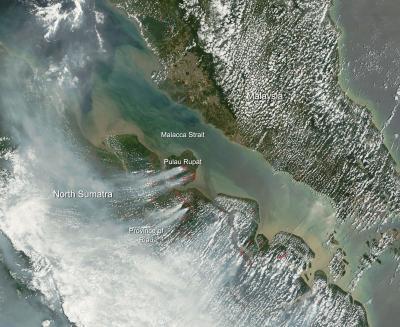On February 27, 2014, the Wall Street Journal and Southeast Asia Realtime reported that: "the plantation-rich province of Riau on Indonesia's Sumatra Island has declared a state of emergency as fires set for land clearing have sent pollution levels soaring and smoke made breathing difficult for thousands."
Tens of thousands of Riau residents are suffering from the effects of the smoke coming from dozens of fires set to clear land in Sumatra. Riau is the center of Indonesia's more than $20 billion palm oil industry—the world's largest. Fires occur with frequency in Riau due to farmers deliberately setting them to make way for the new planting season.
Residents of Riau, numbering more than six million, continue to struggle with the smoke and haze from those fires. Schools have had to close due to the smoke and haze in an effort to keep school children safe from the polluted air.

On Feb. 27, 2014, the Wall Street Journal and Southeast Asia Realtime reported that: "the plantation-rich province of Riau on Indonesia's Sumatra Island has declared a state of emergency as fires set for land clearing have sent pollution levels soaring and smoke made breathing difficult for thousands."
(Photo Credit:
NASA image courtesy Jeff Schmaltz, MODIS Rapid Response Team )
According to WSJ, "Clearing land by fire is illegal for all but the smallest landowners. After the haze crisis last June, Indonesia named 10 palm oil and pulpwood companies suspected of setting the blazes. The government said recently that legal cases against all are ongoing. Police in Riau have detained more than three dozen people suspected of starting the fires. None of them have been identified as being affiliated with plantation companies."
Riau is preparing aerial water bombing and ground-based firefighting operations to fight the fires.
This natural-color satellite image was collected by the Moderate Resolution Imaging Spectroradiometer (MODIS) aboard the Terra satellite on February 28, 2014. Actively burning areas, detected by MODIS's thermal bands, are outlined in red.
Source: NASA/Goddard Space Flight Center